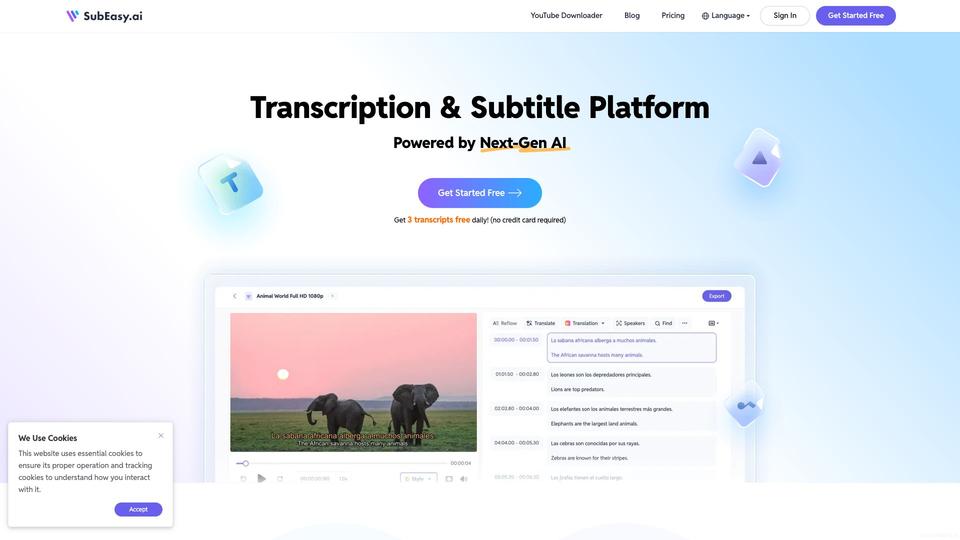SubEasy
Visit WebsiteSubEasy offers ultra-fast, AI-powered transcription and translation services with unparalleled accuracy across 100 languages, streamlining your workflow for audio and video content.

Analytics of SubEasy
- Total Visits
- 100.7K
- Avg. Time on Site
- 03:12
- Bounce Rate
- 41.3%
- Pages per Visit
- 3.1
Traffic Sources
Top Regions
What is SubEasy?
SubEasy is an AI-powered platform that provides automatic transcription, translation, and subtitle generation services for audio and video content. It utilizes advanced AI technology, including Whisper, to deliver highly accurate transcriptions and context-aware translations across 100 languages.
How to use SubEasy?
1. Sign up for a free account on SubEasy.ai 2. Upload your audio or video file in various supported formats 3. Choose your desired language for transcription or translation 4. Wait for the AI to process your content 5. Use the built-in editor to refine the results 6. Export your transcription, subtitles, or captions in multiple formats
SubEasy Core Features
Unlimited transcriptions with 98.9% accuracy
Support for over 100 languages
Context-aware AI translation
Built-in editor for refining results
Multiple import and export formats
AI-powered summaries and content generation
SubEasy Use Cases
Transcribing interviews and podcasts
Creating subtitles for YouTube videos
Translating video content for global audiences
Generating captions for social media content
Transcribing and summarizing meetings or lectures
Creating accessible content for hearing-impaired viewers
FAQ from SubEasy
How accurate is SubEasy's transcription service?
SubEasy uses Whisper, the world's most accurate AI speech-to-text technology, achieving 98.9% accuracy in transcriptions.
What file formats does SubEasy support?
SubEasy supports various audio and video formats including MP3, MP4, M4A, MOV, AAC, WAV, OGG, OPUS, MPEG, WMA, and YouTube links for input. It can export in formats such as VTT, Word, Text, MD, LRC, JSON, ASS, CSV, STL, and PDF.
Is there a limit to how much content I can transcribe?
SubEasy offers an unlimited plan that allows you to transcribe hundreds of hours of audio and video without limits, moving away from traditional pay-per-use models.


